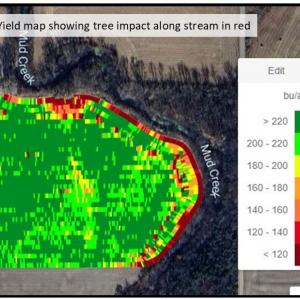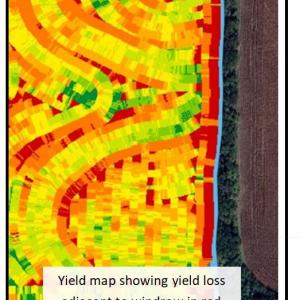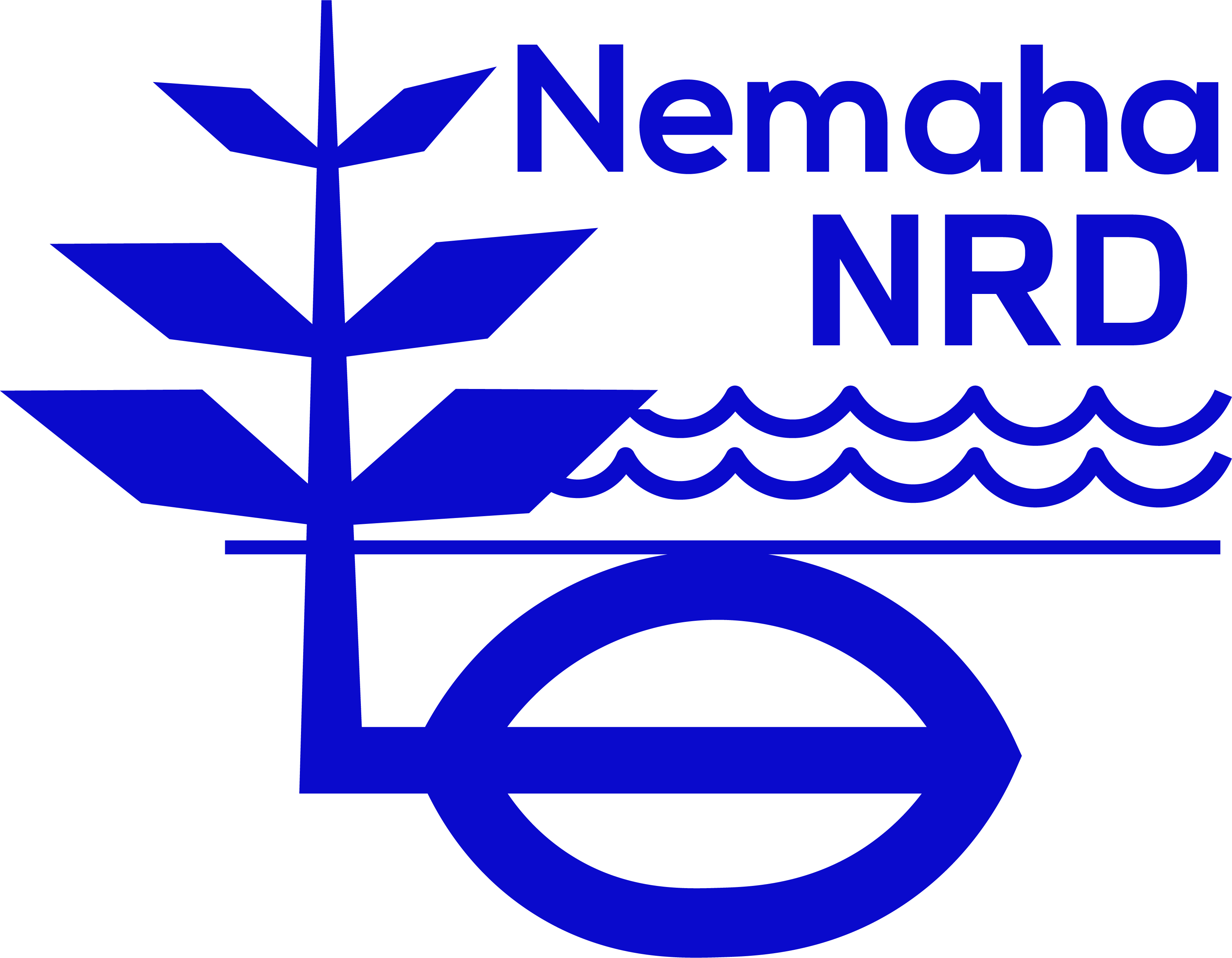Economic Considerations for Least Profitable Acres
Economic Considerations for Least Profitable Acres
Advances in agricultural technology have revolutionized the way we can analyze a field’s productivity and profitability. Technology allows producers to look at profitability down to individual acres across their entire operation to see what parts of fields are making money, breaking even, or losing money. If you have acres that are consistently not profitable, the Nemaha NRD encourages you to take your yield maps and visit with your USDA service center’s Farm Service Agency (FSA) or Natural Resource Conservation Service (NRCS) about potential options through the Nebraska Buffer Strip Program or Continuous Conservation Reserve Program (CRP).
The displayed yield maps are good illustrations of farms that could benefit from the Nebraska Buffer Strip Program or Continuous CRP. You can easily see the impact trees are having on yield for 30’ (arguably 60’) because the crops and trees are competing for the same resources. Putting low yielding acres into conservation programs that receive annual payments is a good alternative for landowners that might be considering taking trees out. Additionally, planting perennial vegetation next to riparian trees and/or hedge rows can promote pollinator species and provide habitat and forage for upland game species like turkeys, deer, pheasants, and quail.
The Nebraska Buffer Strip Program: This program is for cropland adjacent to waterbodies (streams, lakes, wetlands) as shown in the first yield map. Buffer strips can be designed to fit equipment and range from 20 feet to 120 feet in width for grass buffers and 55 feet to 180 feet for riparian buffers. The Nebraska Buffer Strip Program is available as a standalone program receiving 120% of the CRP rental rate by soil type, or piggy-backed on top of the Continuous CRP Filter Strip practice to receive a higher payment rate, if eligible. Advantages to Nebraska Buffer Strip Program would be: Annual haying and grazing once established, contract lengths ranging from 5-10 years, and year-round sign up.
Continuous CRP: This program is open to any acres on portions of a field with cropping history. The second yield map illustrates a field that would benefit from Continuous CRP practices like field borders or prairie strips (prairie strips can also be implemented in areas of the field with thin and unproductive soils, not necessarily adjacent to trees). Continuous CRP can be designed to fit the widths of your equipment and managed through a variety of beneficial alternatives. The last farm bill focused on making management options more adaptive to meet the needs of the producer, including options for haying and grazing. Continuous CRP offers a 5% higher soil rental rate (90%) than General CRP (85%) and includes bonus incentives for signing up and implementing the practice.
If you are interested in learning more about options to maximize profits, create beneficial ecosystems, and protect water quality on your property, please contact your local USDA service center’s Farm Service Agency (FSA) or Natural Resource Conservation Service (NRCS). Click HERE for a poster display of this information.



